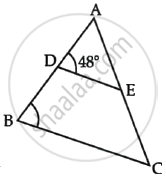Advertisements
Advertisements
प्रश्न
In the adjacent figure ∠BAC = 90° and AD ⊥ BC then
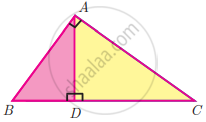
विकल्प
BD.CD = BC2
AB.AC = BC2
BD.CD = AD2
AB.AC = AD2
उत्तर
BD.CD = AD2
Explanation;
Hint: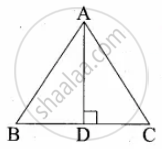
ΔBAC ∼ ΔBDA
`"AC"/"AD" = "AB"/"BD"` ...(1)
ΔCAB ∼ ΔCDA
`"AC"/"CD" = "AB"/"AD"` ...(2)
From (1) and (2) we get
`"BD"/"AD" = "AD"/"CD"`
AD2 = BD·CD
APPEARS IN
संबंधित प्रश्न
The diagonals of a quadrilateral ABCD intersect each other at the point O such that `("AO")/("BO") = ("CO")/("DO")`. Show that ABCD is a trapezium.
In the given figure ΔABC and ΔAMP are right angled at B and M respectively. Given AC = 10 cm, AP = 15 cm and PM = 12 cm.
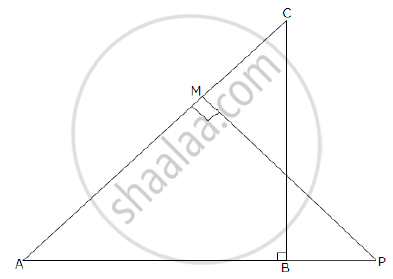
1) Prove ΔABC ~ ΔAMP
2) Find AB and BC.
ΔABC~ΔDEF and their areas are respectively 64 cm2 and 121cm2. If EF = 15.4cm, find BC.
In ΔPQR, PQ = 10 cm, QR = 12cm, PR = 8 cm, find the biggest and the smallest angle of the triangle.
The scale of a map is 1 : 200000. A plot of land of area 20km2 is to be represented on the map. Find
The area on the map that represents the plot of land.
On a map drawn to a scale of 1 : 2,50,000; a triangular plot of land has the following measurements : AB = 3 cm, BC = 4 cm and angle ABC = 90°.
Calculate : the area of the plot in sq. km.
In the following figure, point D divides AB in the ratio 3 : 5. Find :
- `(AE)/(EC)`
- `(AD)/(AB)`
- `(AE)/(AC)`
Also, if: - DE = 2.4 cm, find the length of BC.
- BC = 4.8 cm, find the length of DE.
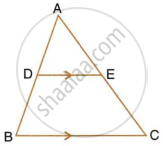
Given that ΔABC ∼ ΔPRQ, name the corresponding angles and the corresponding sides.
The scale of a map is 1 : 50000. The area of a city is 40 sq km which is to be represented on the map. Find: The area of land represented on the map.
In figure, if AD = 6 cm, DB = 9 cm, AE = 8 cm and EC = 12 cm and ∠ADE = 48°. Find ∠ABC.
